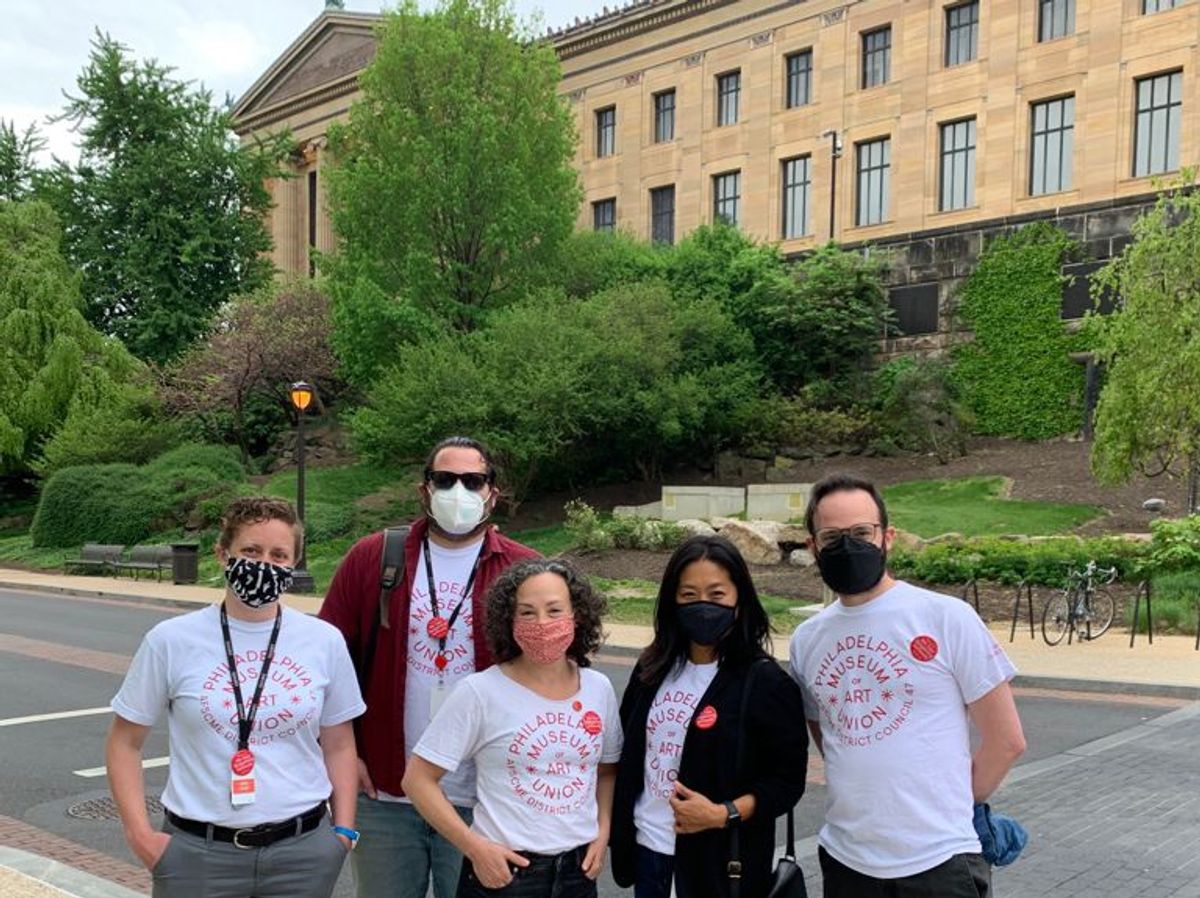One year ago this week, staff at the Philadelphia Museum of Art launched a labour campaign that resulted a few months later in the first-ever wall-to-wall labour union in a major US museum, a move that has since been taken up by workers at several otherinstitutions, including most recently the Whitney Museum in New York. From its inception, the PMA Union has aimed to represent employees across all departments, from visitor services and retail to conservation and curatorial. That remains among its hardest-won accomplishments.
“The biggest success has been just developing our membership in the union, and creating really good communication channels. It has not been easy—we are like a lot of larger museums, pretty siloed into departments and divisions and subdivisions and subdepartments,” says Nicole Cook, a programme manager for graduate academic partnerships at the museum. This was further complicated by the pandemic, when staff have been working both remotely and more recently on-site. Adam Rizzo, the president of the PMA Union who works in the museum’s education department, adds: “For me, one of the best parts is that I know more people across the institution now than I ever did before. Like, by name. What they do and what their lives are like.”
Among the other things that the fledgling union has accomplished during its inaugural year is chartering as a “Local” branch with District Council 47 of the American Federation of State, County, and Municipal Employees (with which the PMA Union is affiliated). This will allow unions formed at other regional cultural institutions to join it in the future.
But for now, and over the past year, it has had plenty to tackle within its own museum. After employees held a mail-in vote over the summer to formalise the union, a decision passed by an 89% supermajority, it formed committees to handle responsibilities like communications, elections for union officials, and a contract campaign.
Meanwhile, as the museum reopened and some employees returned to work in the building, issues like capacity limits and mask mandates were prioritised. “The union formed its own health and safety committee primarily made up of frontline workers, to talk about some of the discrepancies and things that these management staff who were working from home weren’t necessarily thinking about,” says Noah Thompson, a union member and visitor services employee. The union requested a museum floor plan in order to calculate square footage and determine pandemic capacities based on city guidelines, for example.
Another union concern has been severe understaffing, after more than 100 museum employees were laid off in June, plus this month’s addition of 90,000 sq. ft of gallery space that are part of a multimillion-dollar Frank Gehry-designed makeover. Union representatives claim that the museum is mostly handling this shortage by creating temporary positions, which threatens long-term job stability and prohibits union participation (only available to permanent employees). “We don’t have the staff to maintain those galleries. Someone once joked to me that we had a Ferrari on a Hyundai budget,” says Kara Furman, a registrar and board member at large of the Local. “It’s kind of accurate.”
A spokesman for the museum says it “has adequate staff”, considering it is not back to its full pre-pandemic operating hours, and “has been adding staff commensurate with its needs”. And while the institution monitors all aspects of visitor experience, including capacity limits, “we don't have a crystal ball,” the spokesman adds. “Until we have a better sense of what the immediate future holds, we need to proceed cautiously.”
Contract negotiations have been a major way that the PMA Union is advocating for improved staff conditions, and these have been ongoing since October. They began with a request to include a contractual anti-harassment policy and the union plans to discuss issues like benefits and summer salaries soon. “Harassment has been a very difficult thing to agree upon, and given what we have gone through as an institution, it just seems strange that we can’t get movement on that,” says Juliet Vinegra of the library and archives department, the acting secretary of the Local.
The museum spokesman says that there is “an antiharassment policy, mandatory training, and a reporting ‘hot line’ that is monitored 24/7”. Negotiations about adding antiharassment language to the contract agreement faltered when the museum proposed a single, exclusive process for resolving any claims, he added. “The museum believes the best approach is to have a single antiharassment policy for all staff and a clear and predictable process that results in the prompt resolution of all claims,” the spokesman said. And a request from the museum that it not be blocked from disciplining any union employees who are found to have engaged in harassment was rejected by the union, he added.
A year after its public announcement, the PMA union’s members remain dedicated to planning for the future. “There’s often this idea that people unionise because they’re angry at the institution or fighting against the institution. We’re fighting for basic worker rights and safety and stability in our contract, but we’re really fighting for the institution to be a better place,” Rizzo says. “All of us are giving our time to this.”


